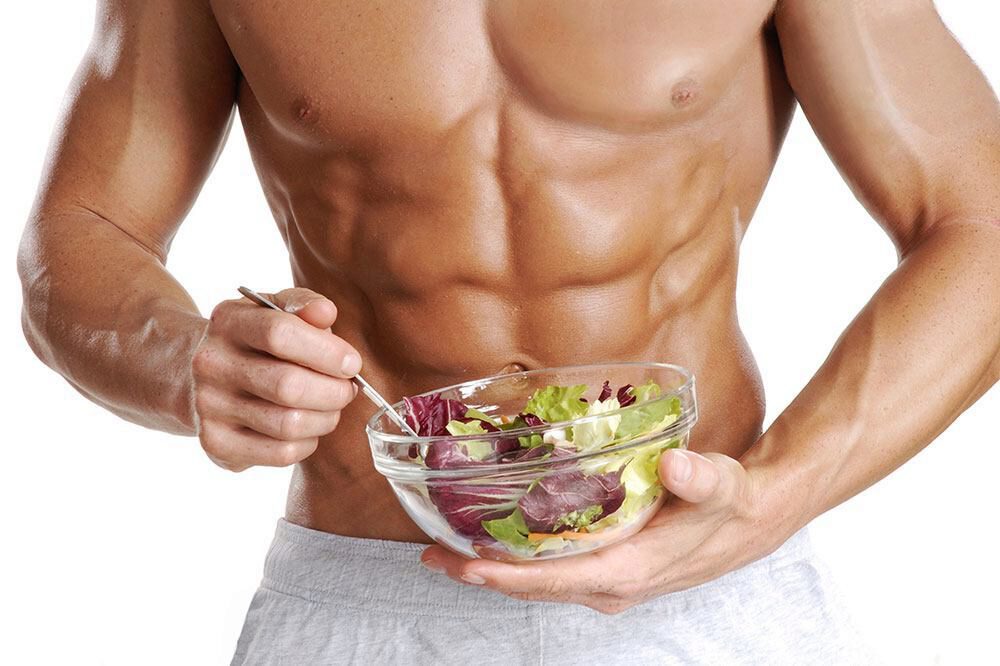Muscle Hypertrophy - Meal Plan For Weight Loss And Muscle Gain
Muscle hypertrophy involves an increase in size of skeletal muscle through a growth in size of its component cells. Two factors contribute to hypertrophy: sarcoplasmic hypertrophy, which focuses more on increased muscle glycogen storage; and myofibrillar hypertrophy, which focuses more on increased myofibril size. However, neither happens in isolation, which is why top-level bodybuilders and strongman competitors differ so greatly in muscle size and strength.

Hypertrophy stimulation
A range of stimuli can increase the volume of muscle cells. These changes occur as an adaptive response that serves to increase the ability to generate force or resist fatigue in anaerobic conditions.
Strength training
Strength training typically produces a combination of the two different types of hypertrophy: contraction against 80 to 90% of the one-repetition maximum for 2-6 repetitions (reps) causes myofibrillated hypertrophy to dominate (as in powerlifters, Olympic lifters and strength athletes), whereas several repetitions (generally 8-12 for bodybuilding or 12 or more for muscular endurance) against a submaximal load facilitates mainly sarcoplasmic hypertrophy (professional bodybuilders and endurance athletes). The first measurable effect is an increase in the neural drive stimulating muscle contraction. Within just a few days, an untrained individual can achieve measurable strength gains resulting from "learning" to use the muscle. As the muscle continues to receive increased demands, the synthetic machinery is upregulated. Although all the steps are not yet clear, this upregulation appears to begin with the ubiquitous second messenger system (including phospholipases, protein kinase C, tyrosine kinase, and others). These, in turn, activate the family of immediate-early genes, including c-fos, c-jun and myc. These genes appear to dictate the contractile protein gene response.
Progressive overload is considered the most important principle behind hypertrophy, so increasing the weight, repetitions (reps), and sets will all have a positive impact on growth. Some experts create complex plans that manipulate weight, reps, and sets, increasing one while decreasing the others to keep the schedule varied and less repetitive.
Anaerobic training
The best approach to specifically achieve muscle growth remains controversial (as opposed to focusing on gaining strength, power, or endurance); it was generally considered that consistent anaerobic strength training will produce hypertrophy over the long term, in addition to its effects on muscular strength and endurance. Muscular hypertrophy can be increased through strength training and other short-duration, high-intensity anaerobic exercises. Lower-intensity, longer-duration aerobic exercise generally does not result in very effective tissue hypertrophy; instead, endurance athletes enhance storage of fats and carbohydrates within the muscles, as well as neovascularization.
Factors affecting hypertrophy
Several biological factors such as age and nutrition can affect muscle hypertrophy. During puberty in males, hypertrophy occurs at an increased rate. Natural hypertrophy normally stops at full growth in the late teens. An adequate supply of amino acids is essential to produce muscle hypertrophy. As testosterone is one of the body's major growth hormones, on average, men find hypertrophy much easier to achieve than women. Taking additional testosterone, as in anabolic steroids, will increase results. It is also considered a performance-enhancing drug, the use of which can cause competitors to be suspended or banned from competitions. Testosterone is also a medically regulated substance in most countries, making it illegal to possess without a medical prescription. Anabolic steroid use has been suggested to cause testicular atrophy, cardiac arrest, and gynecomastia.

Changes in protein synthesis and muscle cell biology associated with stimuli
Protein synthesis
The message filters down to alter the pattern of protein expression. The additional contractile proteins appear to be incorporated into existing myofibrils (the chains of sarcomeres within a muscle cell). There appears to be some limit to how large a myofibril can become: at some point, they split. These events appear to occur within each muscle fiber. That is, hypertrophy results primarily from the growth of each muscle cell, rather than an increase in the number of cells. Skeletal muscle cells are however unique in the body in that they can contain multiple nuclei, and the number of nuclei can increase.
Cortisol decreases amino acid uptake by muscle tissue, and inhibits protein synthesis. The short-term increase in protein synthesis that occurs subsequent to resistance training returns to normal after approximately 28 hours in adequately fed male youths. Another study determined that muscle protein synthesis was elevated even 72 hours following training.
A small study performed on young and elderly found that ingestion of 340 grams of lean beef (90 g protein) did not increase muscle protein synthesis any more than ingestion of 113 grams of lean beef (30 g protein). In both groups, muscle protein synthesis increased by 50%. The study concluded that more than 30 g protein in a single meal did not further enhance the stimulation of muscle protein synthesis in young and elderly. However, this study didn't check protein synthesis in relation to training; therefore conclusions from this research are controversial.
It is not uncommon for bodybuilders to advise a protein intake as high as 2-4 g per kilogram of bodyweight per day. However, scientific literature has suggested this is higher than necessary, as protein intakes greater than 1.8 g per kilogram of body weight showed to have no greater effect on muscle hypertrophy. A study carried out by American College of Sports Medicine (2002) put the recommended daily protein intake for athletes at 1.2-1.8 g per kilogram of body weight. Conversely, Di Pasquale (2008), citing recent studies, recommends a minimum protein intake of 2.2 g/kg "for anyone involved in competitive or intense recreational sports who wants to maximize lean body mass but does not wish to gain weight. However athletes involved in strength events (..) may need even more to maximize body composition and athletic performance. In those attempting to minimize body fat and thus maximize body composition, for example in sports with weight classes and in bodybuilding, it's possible that protein may well make up over 50% of their daily caloric intake."
Microtrauma
Microtrauma, which is tiny damage to the fibers, may play a significant role in muscle growth. When microtrauma occurs (from weight training or other strenuous activities), the body responds by overcompensating, replacing the damaged tissue and adding more, so that the risk of repeat damage is reduced. Damage to these fibers has been theorized as the possible cause for the symptoms of delayed onset muscle soreness (DOMS), and is why progressive overload is essential to continued improvement, as the body adapts and becomes more resistant to stress.
Myofibrillar vs. sarcoplasmic hypertrophy
In the bodybuilding and fitness community and even in some academic books skeletal muscle hypertrophy is described as being in one of two types: Sarcoplasmic or myofibrillar. According to this hypothesis, during sarcoplasmic hypertrophy, the volume of sarcoplasmic fluid in the muscle cell increases with no accompanying increase in muscular strength, whereas during myofibrillar hypertrophy, actin and myosin contractile proteins increase in number and add to muscular strength as well as a small increase in the size of the muscle. Sarcoplasmic hypertrophy is greater in the muscles of bodybuilders while myofibrillar hypertrophy is more dominant in Olympic weightlifters. These two forms of adaptations rarely occur completely independently of one another; one can experience a large increase in fluid with a slight increase in proteins, a large increase in proteins with a small increase in fluid, or a relatively balanced combination of the two.

In sports
Examples of increased muscle hypertrophy are seen in various professional sports, mainly strength related sports such as boxing, bodybuilding, mixed martial arts, rugby, professional wrestling and various forms of gymnastics. These athletes train extensively in strength as well as cardiovascular and muscular endurance training.

See also
- Anabolism
- Davis' law
- Muscle atrophy
- Muscle dystrophy
- Myostatin

References
Interesting Informations
Looking products related to this topic, find out at Amazon.com
Source of the article : here












0 komentar :
Your comments